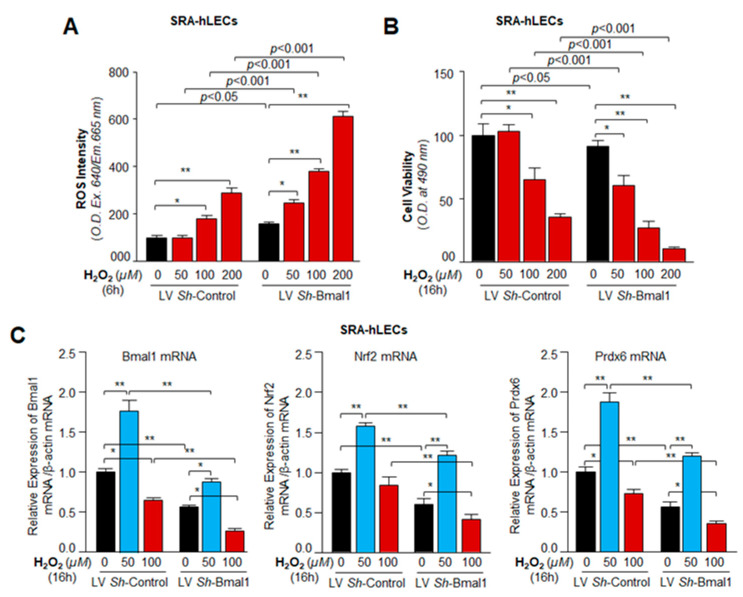Figure 8.
Bmal1-depleted SRA-hLECs showed enhanced ROS and reduced viability under oxidative stress. SRA-hLECs were infected with lentiviral shRNA specific to Bmal1. Bmal1 knockdown cells of each group were pooled and plated in 96-well plate (ROS and MTS assay) or 60-mm culture plate (RNA isolation). Twenty-four hours later, those cells were exposed to 0, 50, 100, and 200 μM of H2O2. (A) ROS levels were measured at 6 h of H2O2 exposure. (B) Cell viability was examined at 16 h with MTS dye. Data represent means ± S.D. of three independent experiments. Untreated (black bar) vs. treated (red bars) with H2O2, *p < 0.05, **p < 0.001. (C) Bmal1-dependent modulation of Nrf2 and Prdx6 expression during oxidative stress. Bmal1-depleted cells were exposed to 50 µM (blur bar) and 100 µM (red bar) H2O2. Total RNA was isolated from SRA-hLECs lentiviral infected with Sh-Control and Sh-Bmal1 followed by H2O2 exposure for 16 h and RT-qPCR analysis. Bmal1, Nrf2, and Prdx6 mRNA expression were observed with specific primers indicated in Materials and Methods. Data represent means ± S.D. of three independent experiments. LV Sh-Control vs. LV Sh-Bmal1 and Untreated (black bar) vs. treated (red bar) with H2O2, *p < 0.05, **p < 0.001.

